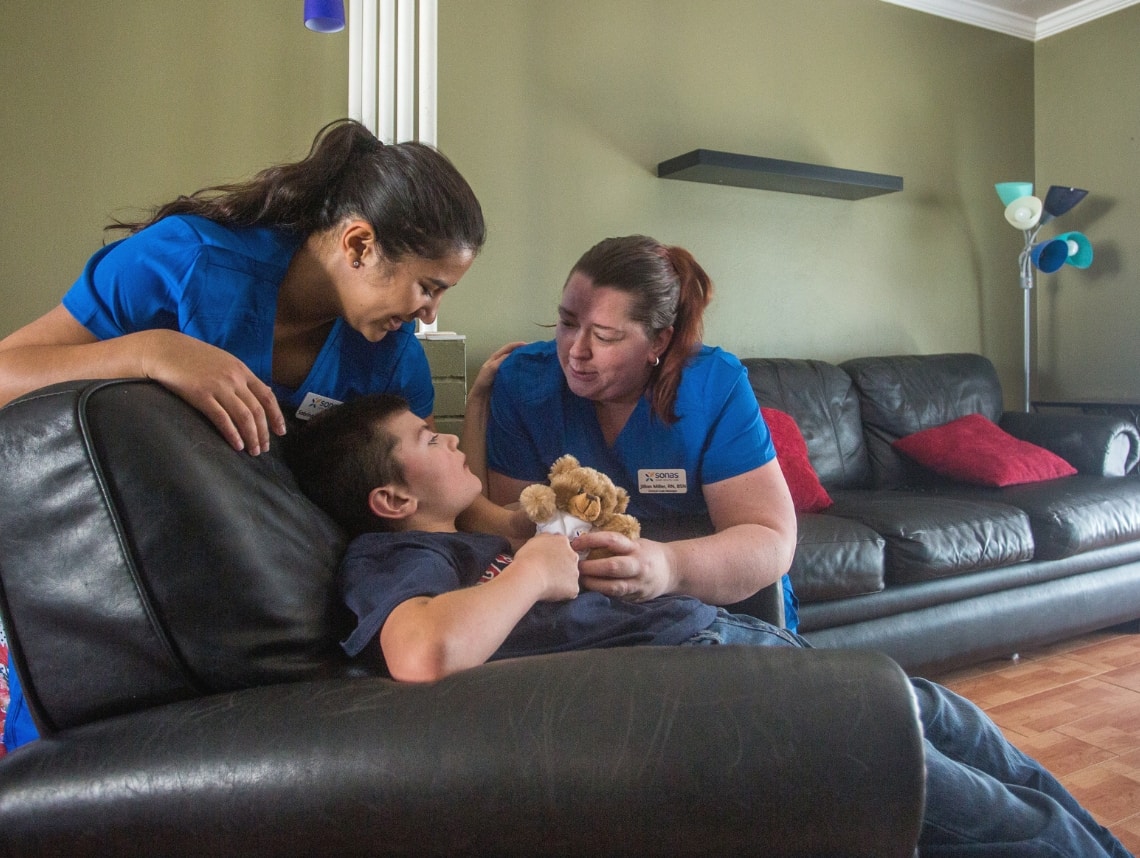Having a child comes with a very wide range of emotions: from overwhelming love, to constant worry about their wellbeing and overall health and happiness.
When a child is diagnosed as nonverbal, the list of things to worry about increases exponentially: How do you know if your child needs anything? Is he or she feeling pain? Would they like to watch a movie? Is he hungry? Is she comfortable? What if your child really needs you, and you don’t know how to communicate with them?
Understanding that this can make you feel helpless, we’ve made a list of ways to communicate with a nonverbal child in the most efficient ways.
What is a nonverbal child?
Nonverbal children compose 30% of kids diagnosed with autism spectrum disorder. Although there’s no specific diagnosis such as “nonverbal autism”, this is the designation given to children who either only use a handful of spoken words to communicate, or who don’t use any words at all.
They may be able to repeat a few words, or to point at something and call it by its correct name, but aren’t able to carry on a conversation.
6 Ways to Communicate With a Nonverbal Autistic Child
1. Get Involved in Interactive Play
Playing is the work of children. This is especially so if you choose games that suit their interests. If your child loves coloring books and crayons, spend some time coloring pages, naming the names of the colors, and naming the pictures in the book. If your child prefers Legos, name the color of each block, count the blocks, and name the object that you’re building together. This will help them develop social skills.
2. Give Them Options
When you’re going to get your child involved in any type of activity – be it choosing a toy to play with, a meal to eat, or a movie to watch – ask them whether they would prefer Y or Z, and show them the options. Sometimes, he or she will be able to mention one word (“apple”, “Frozen”). Other times, they’ll point to what they’d prefer. It’s a way of getting them involved in the decision-making process.
3. Encourage Imitation
When playing with a nonverbal child, mimic their movements, facial expressions, and sounds. Do it often enough so that they realize what you’re doing and encourage them to do the same. It’s a good way to show them how to pay attention. However, it’s an activity that requires a lot of patience and the recognition that not all children with autism have the ability to imitate what they see.
4. Use Simple Language to Label Feelings and Activities
For example, if your child reaches for a cup of water, say “thirsty” as you hand it over to them. If they reach out for their favorite toy, name the toy as he or she grabs it: “doll”, “truck”, or “Legos”. If you say “no”, shake your head. If you say “yes” nod noticeably.
5. Use Assistive Devices
Depending on where on the autism spectrum a child is, sometimes they do know what they want, and they do know specific words for items, but they do not know how to ask for them. It’s important to be cognizant of the fact that there are other ways a nonverbal child can communicate: through sign language, and assistive devices (such as flashcards, apps, or visual boards).
6. Follow Their Lead
Sometimes, no matter how much you try, a nonverbal child still has a difficult time communicating. They may simply repeat the same word or phrase over and over, or the same movement, or may want to watch the same movie several times in a row, or do the same activity over and over again throughout the day. If that’s what gives them comfort, let them enjoy the activities they want to do. See what motivates them and join them.
If the repetitive behavior bothers you or confuses you, try to understand the reasoning behind it instead of trying to get your child to stop.
Schedule Your Child’s Care Assessment Today
At Care Options for Kids, we understand the unique challenges of caring for a child with basic to medically-complex health conditions. Our dedicated team of pediatric home health nurses is here to support your family with compassionate, expert care tailored to your child’s needs. Contact us today to schedule an assessment and learn how we can help you navigate this journey with confidence and care.
Click here to start your journey to better care.






